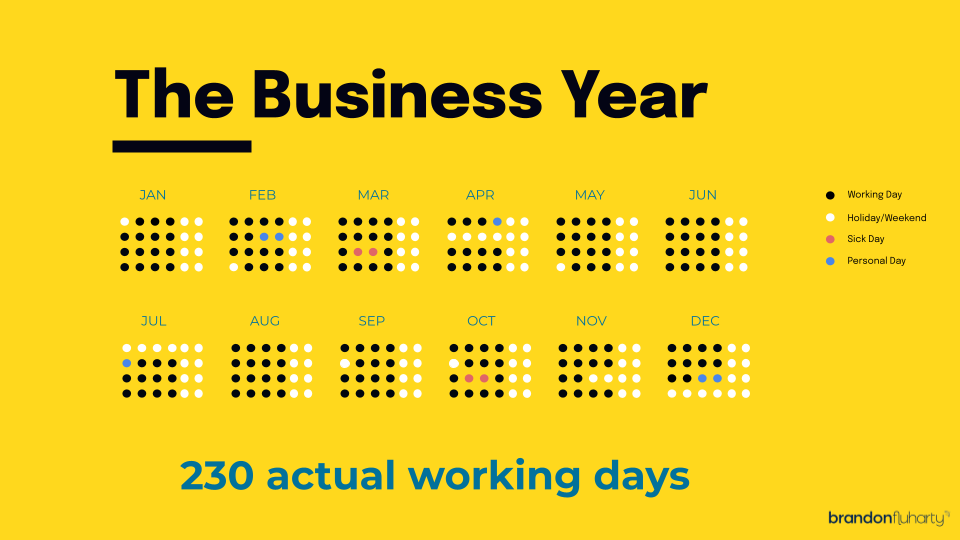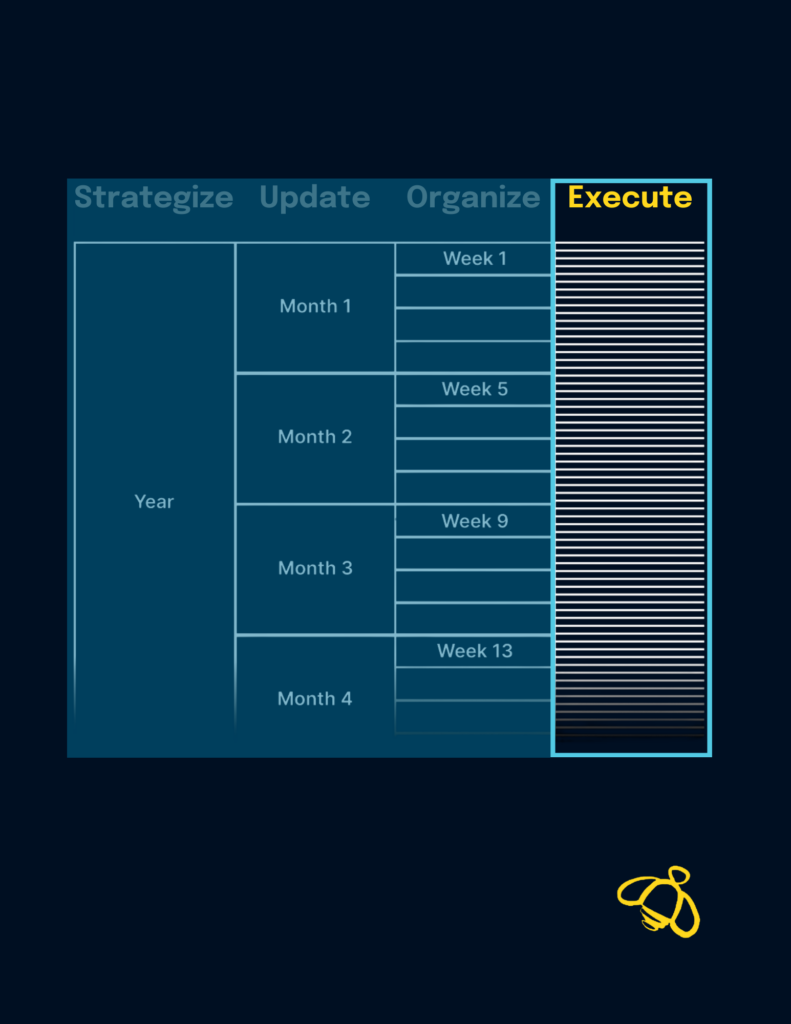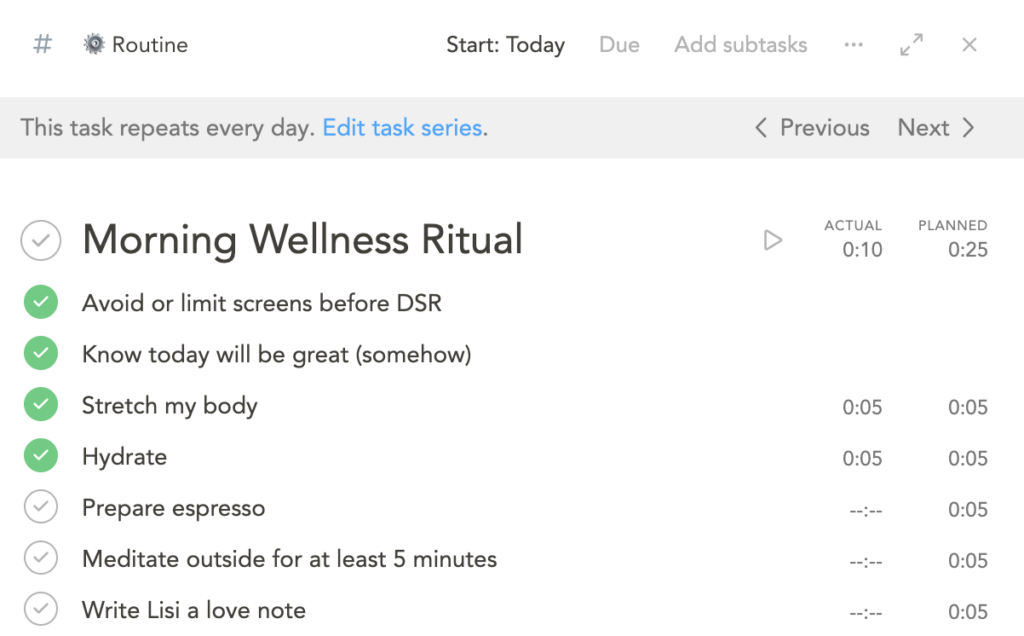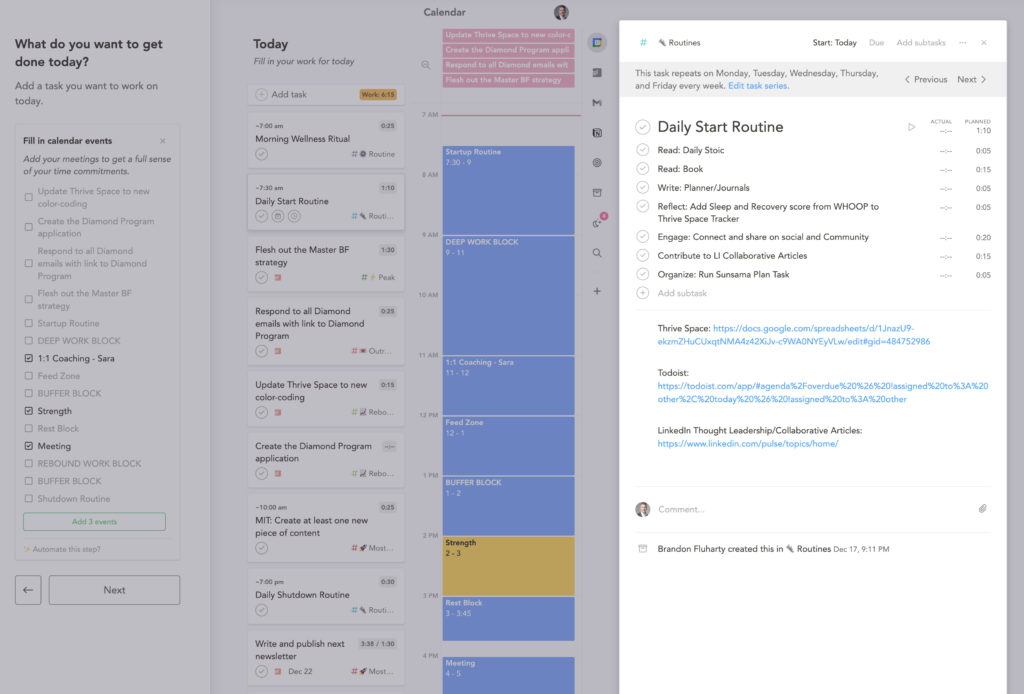***
A big thank you to our partners who keep this content free for you:
Build better daily habits in 2024 with Sunsama: Leaders at Spotify, Y Combinator, and Lightspeed organize their lives with Sunsama — the daily planner for purposeful performers. I use it to manage my tasks, meetings, and emails from one place each day. Get the tool trusted by the world’s most successful performers. Try it for free for 30 days!
Reach more key decision-makers with Cognism. Get access to 6M diamonds or ask Cognism to source and verify your most valuable contacts on demand. Contacts manually verified by our team have 98% accuracy. Get started today!
If you click a link and make a purchase in this newsletter, I may earn a small commission (at no extra cost to you).
***
⚡️ Today’s level up ⚡️
Today’s edition breaks down the daily execution, the final part of four specific calendar appointments you need to keep with yourself to take your sales career to new heights.
Let’s go!
Read time: <9 minutes
If you missed them, read part one here, part two here, and part three here.
The single unit of success for the year is one workday

When you factor in weekends, the working year is comprised of just 260 days. When you subtract 11 federal holidays (for U.S. readers), 3 weeks of vacation, some personal days, and a few sick days here and there, you’re left with 230 actual working days in the year.
That’s just 1,840 hours if you’re actually working a full 8 hours a day. Most people I know think they work for 14-16 hours a day, but if they were actually to track their time, it would be closer to 5 – 6 hours of actual work spread across 14 – 16 hours.
Sprinkle in 6, 8, or 10 hours of meetings each week, business travel, and other mundane work like updating your CRM, and you can see that the time you have left over is minimal. It’s precious, so it’s worth figuring out how to make the most of each day.
The key is not to prioritize what is on your schedule but to schedule your priorities. – Stephen Covey
I’ll break down my daily execution, which is actually comprised of two pillar routines – one at the beginning of the day and one at the end.
It doesn’t take much time to work through them, and they keep me on track to ensure I’m progressing toward my targets.
Commitment 4: The daily execution

What is it?
A “startup” routine at the start of the day to prime my brain for work and a “shutdown” routine at the end of the day to reflect back and plan ahead.
Like an athlete wouldn’t start a workout by sprinting as fast as possible or lifting the heaviest weight without a warmup, you, too, should prime your brain before jumping right into the tough stuff. As a knowledge professional, you’re a mental athlete, so why not start with a little mental yoga?
The problem (as I was guilty of it for many years) is we typically default to low-value reactive work to start our days. It’s certainly easy to do because, for most of us, our phone is our alarm clock. That makes it dangerously easy to open up email, Slack, or start scrolling on social media – all before we’ve even gotten out of bed.
However, this habit signals that other people’s time is more important than your own, and you’re instantly starting the day on the back foot – doing no favors for your productivity or your mental well-being. In this scenario, the day is about playing catchup rather than getting ahead.
And because most professionals don’t have strong boundaries in place, ending the day without shutting down makes it hard to be present in other areas of your life, like spending time with family, on hobbies, or improving your health and fitness.
How does it work?
“Instead of feeling that you’ve blown the day and thinking, ‘I’ll get back on track tomorrow,’ try thinking of each day as a set of four quarters: morning, midday, afternoon, and evening. If you blow one quarter, you get back on track for the next quarter. Fail small, not big.” – Gretchen Rubin
I divide my days into four main zones:
1. Sleep
2. Discipline
3. Flexibility
4. Curiosity
The goal is to set up a consistent operating rhythm for each workday so that it’s crystal clear on what to do and when. If I get sidetracked, all I need to do is look at my personal operating rhythm to get back on course.
I track my performance, and by doing so, work now feels like a fun game I get to play.

Sleep Zone
I’ve been wearing a WHOOP since 2019, so I have a pretty good grasp of how much sleep I should be getting each night and how much time I should be in bed to meet that sleep need.
The more consistent I am and the closer I am to 100% of my sleep need, the higher my recovery will be the next day and the better equipped I’ll be to handle mental and physical strain and stress.
On an ideal day, my Sleep Zone is 11 PM – 7 AM.
Discipline Zone
As I have become familiar with my chronotype, I know that my energy peaks generally around 90 minutes after waking up. That means I want to take full advantage of my Discipline Zone of the day by getting my most important high-value work done then.
This has evolved over time, but as an active strategic seller, this zone was focused on the deep work necessary to progress my Diamond Accounts. Now, retired from corporate selling, this time is reserved for writing.
On an ideal day, my Discipline Zone is 7 AM – 11 AM.
Flexibility Zone
Being flexible means working well with and for others. This is when I try to schedule all of my meetings, appointments, and get all of my follow-up work done (like email). I make sure I take a full hour for lunch, have plenty of breaks, and sneak in a quick nap if I need it.
On an ideal day, my Flexibility Zone is 11 AM – 7 PM.
Curiosity Zone
I round out my day with curiosity. That means reflecting on the day, planning out tomorrow, and exploring other things in this world (hobbies, spending time with my wife, reading, planning a new trip, etc.).
On an ideal day, my Curiosity Zone is 7 PM – 11 PM.
I anchor my day with two pillar routines to keep this operating rhythm intact.
The Startup Routine
If you do use your smartphone as your alarm, a simple trick I use to remind my waking self to get up and start the day is to label my alarm “FOCUS.”

I have a short wellness ritual as the first thing I do, which I have saved in my Sunsama as a daily task.
At this point in my life, this ritual has become pretty automatic. I encourage you to come up with a short ritual you can use to prime your brain to get ready for a strong performance, rather than defaulting to scrolling social media, checking the news, or looking at email first thing.
Instead of dopamine from social media, I get the dopamine of clicking off my wellness ritual tasks in Sunsama before I get to work.

After my wellness ritual is done, I run through my Daily Start Routine, which programmatically works through a series of tasks that build in things that are important to me at this stage of my life – like reading The Daily Stoic, reading a few pages of a book, writing in my journal, and connecting with others’ content on LinkedIn. It all culminates with my MIT (Most Important Task).
Then, I tackle the rest of my day by calmly working through all of my tasks, meetings, and emails from a single view in Sunsama.

The Shutdown Routine
Before ending my workday, I like to run through a series of checks, tasks, and questions to make sure I’m feeling good about my day and prepared for tomorrow.

Here are my favorite questions I like to ask:
– What’s one thing you are grateful for?
– What went well (and how can you repeat it tomorrow)?
– What didn’t go well (and how can you eliminate it tomorrow)?
– How are you feeling (and why)?
– What is one small action you can do to improve this (if needed)?
The secret of success is to do the common things uncommonly well. – John D. Rockefeller
When should you do it and how long does it take?
My startup routine is about 1 – 1.5 hours and, ideally, I work through it from 7:30 AM – 9 AM. My shutdown routine takes less than 30 minutes and I complete it around 7 PM.
Helpful tools
– WHOOP (Sleep tracking)
– Sunsama (Daily planner)
– Thrive Space (New version coming!)
Let’s put this into action together
On Monday, March 11th, from 4 – 5 PM EST, I will run a workshop walking Make More Hustle Less Club Members through the daily execution in full.
There are three ways to access this workshop:
1. Current MMHL Club member: Go to your hub page to get it on your calendar.
2. 7 Steps to 7 Figures reader: Add a membership.
3. Newsletter subscriber only: Sign up for the 7 Figure OS and select Option 2 or 3.
See you in 2024! Happy New Year!
Here’s how I can help you right now:
1 | Unlock the 7 Figure Seller OS
Learn how to use design and systems thinking to become a 7 figure seller. There are 3 options to allow you to customize your learning journey.
2 | Download The 7 Figure Open Letter
Get the creative strategic selling strategy that landed a $5.9M deal with a top 4 major global airline. Bonus inside!
3 | Book a 1:1 coaching session right now
You can book a 60-minute coaching session with me (although the Pro above option provides access to 1:1 coaching with me at a 70% discount. Note, just a handful of available coaching slots remain for 2023).

